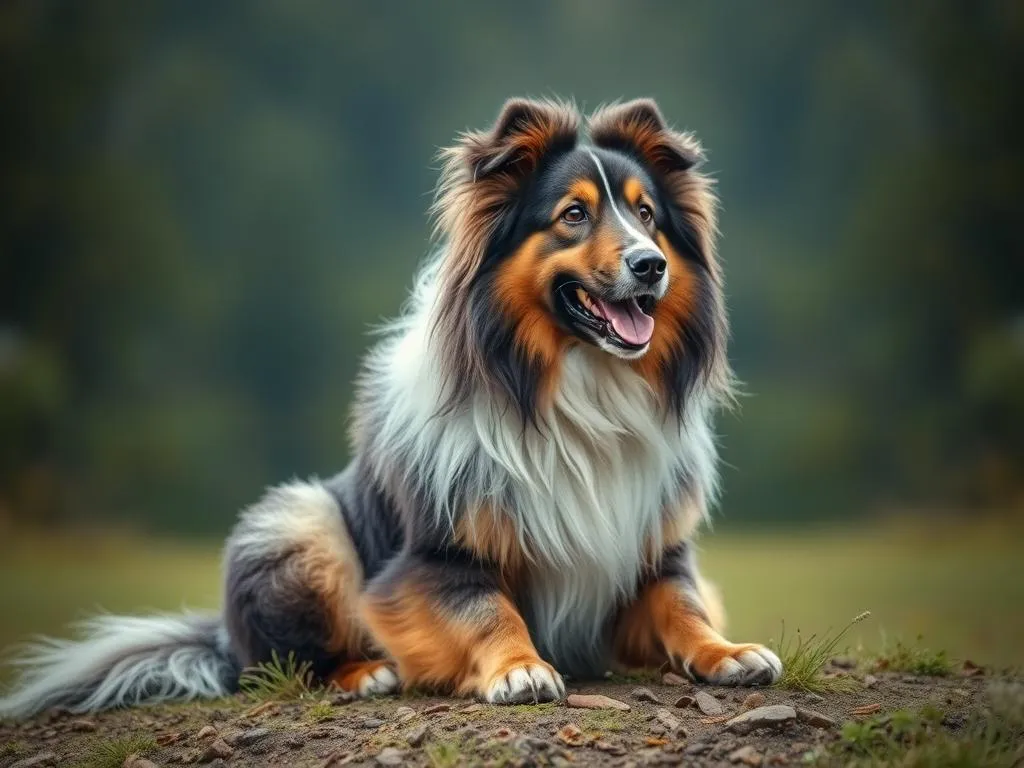
Introduction
Dog breeding has a rich history that dates back thousands of years, primarily aimed at enhancing specific traits and characteristics that serve various purposes. From loyal companions to skilled working dogs, each breed has a unique story and role in human society. Understanding different dog breeds is crucial for potential dog owners, as it helps them choose a pet that aligns with their lifestyle and preferences.
One breed that stands out in this vast array of canine companions is the Polish Tatra Sheepdog. This breed, known for its impressive guarding abilities and affectionate nature, holds a significant place in the world of dogs. Let’s explore what makes the Polish Tatra Sheepdog a fascinating choice among dog breeds.
Understanding Dog Breeds
Definition and Classification
A dog breed is defined as a specific group of domestic dogs with similar characteristics and traits, which include physical features, temperament, and behavior. Breeds are classified into various categories based on their original purpose, such as working, herding, sporting, and more. Each category encompasses breeds that exhibit particular skills or traits aligned with their historical roles.
Importance of Dog Breeds
The role of dog breeds in society is multifaceted. Some breeds serve as loyal companions, while others are bred for specific tasks such as herding livestock, guarding property, or even assisting individuals with disabilities. Understanding the differences between breeds is essential, as it influences not only physical traits but also behavioral tendencies and temperament. For example, some breeds are naturally more protective, while others are more sociable and friendly.
Overview of Popular Dog Breeds
Working Breeds
Working breeds are known for their strength and intelligence, making them excellent at performing tasks. The German Shepherd is a prime example, often utilized in police and military roles due to its trainability and loyalty. Other notable working breeds include the Rottweiler, which excels in guarding and protection tasks.
Herding Breeds
Herding breeds, such as the Border Collie and Australian Shepherd, are renowned for their ability to manage livestock. These dogs are highly intelligent and energetic, requiring ample exercise and mental stimulation to thrive.
Sporting Breeds
Sporting breeds are characterized by their friendly nature and love for physical activity. The Labrador Retriever and Golden Retriever are two of the most popular sporting breeds, known for their playful demeanor and excellent companionship qualities.
Toy Breeds
Toy breeds are small in stature but big in personality. Breeds like the Chihuahua and Pomeranian are perfect for those who prefer a compact companion. Despite their size, they often have bold personalities and can be quite protective.
Non-Sporting Breeds
Non-sporting breeds encompass a variety of dogs with diverse characteristics. The Bulldog and Dalmatian are examples of non-sporting breeds, each with unique traits and historical significance. These breeds vary widely in size, temperament, and purpose, showcasing the diversity within the canine world.
Deep Dive into the Polish Tatra Sheepdog
Breed History
The Polish Tatra Sheepdog has its roots in the Tatra Mountains of Poland, where it was bred to guard herds of sheep against predators such as wolves and bears. This breed has a long-standing historical significance in Poland and surrounding regions, often regarded as a symbol of rural life and tradition. Its ability to work alongside shepherds and protect livestock has solidified its reputation as an essential breed in Polish culture.
Physical Characteristics
The Polish Tatra Sheepdog is a large and robust breed, typically standing between 24 to 28 inches tall and weighing between 80 to 120 pounds. They have a thick, double coat that is often white, though some may have light tan markings. This coat is designed to protect them from harsh weather conditions, making them well-suited for mountainous terrains. Their distinctive features include a strong, muscular build, a broad head, and expressive dark eyes that convey their intelligence and loyalty.
Temperament and Behavior
The Polish Tatra Sheepdog is known for its loyal and protective nature. This breed tends to be independent and confident, making it an excellent guardian for homes and livestock. They are highly intelligent, which can make training both rewarding and challenging. Early socialization is crucial to help them develop positive relationships with other animals and people. When properly trained and socialized, they can be affectionate and playful companions.
Health and Lifespan
The average lifespan of a Polish Tatra Sheepdog is around 12 to 14 years. While generally healthy, like all breeds, they can be prone to certain health issues, including hip dysplasia and progressive retinal atrophy. Regular veterinary check-ups, a balanced diet, and proper exercise are essential for maintaining their health and longevity.
Care and Maintenance of Polish Tatra Sheepdog
Exercise Requirements
The Polish Tatra Sheepdog is an active breed that requires regular exercise to maintain its physical and mental well-being. Daily walks, playtime in a secure yard, and engaging activities such as agility training can help satisfy their exercise needs. These dogs thrive in environments where they can roam and explore, making them well-suited for homes with ample outdoor space.
Grooming Needs
Grooming is an essential part of caring for a Polish Tatra Sheepdog, particularly due to their thick double coat. Regular brushing, at least once or twice a week, is necessary to prevent matting and reduce shedding. During shedding seasons, more frequent grooming may be required. Bathing should be done as needed, using a mild dog shampoo to maintain coat health and cleanliness.
Diet and Nutrition
Providing a balanced diet is crucial for maintaining the health of a Polish Tatra Sheepdog. High-quality dog food that meets their nutritional needs is essential. It’s advisable to consult with a veterinarian to determine the best dietary guidelines based on their age, weight, and activity level. Proper nutrition will support their overall health, energy levels, and coat condition.
Living with a Polish Tatra Sheepdog
Ideal Living Conditions
The Polish Tatra Sheepdog thrives in environments that offer plenty of space to roam and explore. While they can adapt to apartment living, they are best suited for rural or suburban homes with a yard. These dogs enjoy being outdoors and require enough space to engage in physical activities. A secure yard is essential to prevent them from wandering off in search of stimulation.
Training Tips
Training a Polish Tatra Sheepdog requires consistency, patience, and positive reinforcement techniques. Early socialization is crucial to help them become well-adjusted adults. Puppy training classes can provide valuable socialization and basic obedience skills. Due to their intelligence, they respond well to training that challenges their minds. Incorporating fun activities and games can make the learning process enjoyable for both the dog and the owner.
Potential Challenges
While the Polish Tatra Sheepdog is generally a well-mannered breed, they may exhibit some challenges, particularly if not properly socialized or trained. Behavioral issues such as excessive barking or stubbornness can arise if they are not given enough mental and physical stimulation. First-time dog owners should be aware of these potential challenges and be prepared to invest time and effort into training and socialization.
Conclusion
The Polish Tatra Sheepdog stands out among dog breeds for its impressive guarding abilities, affectionate nature, and rich history. Understanding the traits and characteristics of this breed is vital for anyone considering bringing one into their home. By recognizing the unique needs of the Polish Tatra Sheepdog, potential owners can ensure a fulfilling and joyful companionship. Dogs, regardless of their breed, bring immense joy and loyalty into our lives, and the Polish Tatra Sheepdog is no exception.
Frequently Asked Questions (FAQs)
Q: What is the temperament of the Polish Tatra Sheepdog?
A: The Polish Tatra Sheepdog is known for being loyal, intelligent, and protective. They require early socialization and training to develop positive behaviors.
Q: How much exercise does a Polish Tatra Sheepdog need?
A: This breed requires regular exercise, including daily walks and playtime. They thrive in environments where they can engage in physical activities.
Q: What are common health issues associated with the Polish Tatra Sheepdog?
A: Common health concerns include hip dysplasia and progressive retinal atrophy. Regular veterinary check-ups are essential for maintaining their health.
Q: Is the Polish Tatra Sheepdog suitable for first-time dog owners?
A: While they can be a rewarding breed, the Polish Tatra Sheepdog may not be the best choice for first-time dog owners due to their training and socialization needs.
Q: What grooming needs does the Polish Tatra Sheepdog have?
A: The Polish Tatra Sheepdog requires regular brushing to maintain their thick coat, especially during shedding seasons. Bathing should be done as needed.









